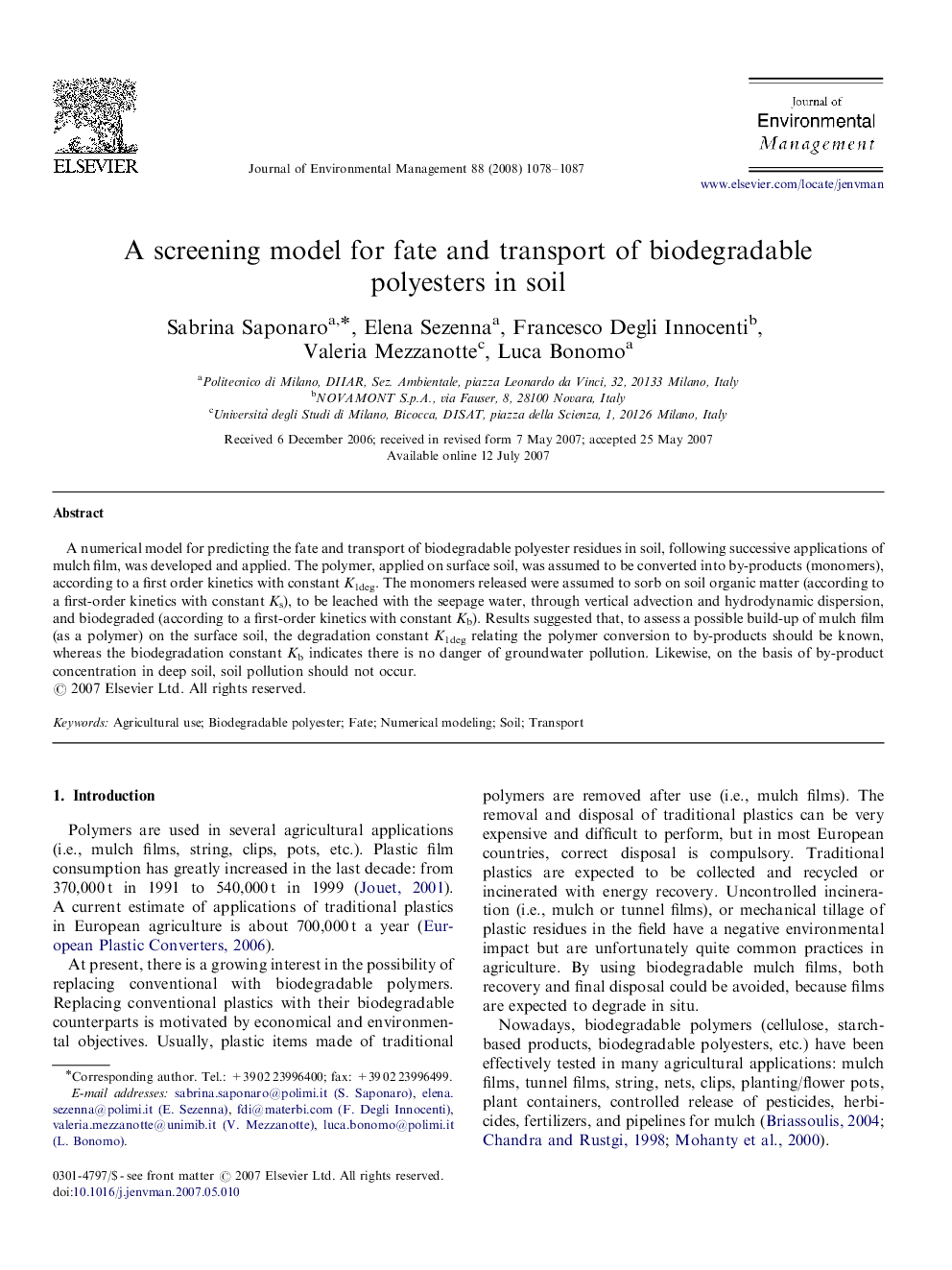| Article ID | Journal | Published Year | Pages | File Type |
|---|---|---|---|---|
| 1058304 | Journal of Environmental Management | 2008 | 10 Pages |
A numerical model for predicting the fate and transport of biodegradable polyester residues in soil, following successive applications of mulch film, was developed and applied. The polymer, applied on surface soil, was assumed to be converted into by-products (monomers), according to a first order kinetics with constant K1deg. The monomers released were assumed to sorb on soil organic matter (according to a first-order kinetics with constant Ks), to be leached with the seepage water, through vertical advection and hydrodynamic dispersion, and biodegraded (according to a first-order kinetics with constant Kb). Results suggested that, to assess a possible build-up of mulch film (as a polymer) on the surface soil, the degradation constant K1deg relating the polymer conversion to by-products should be known, whereas the biodegradation constant Kb indicates there is no danger of groundwater pollution. Likewise, on the basis of by-product concentration in deep soil, soil pollution should not occur.
